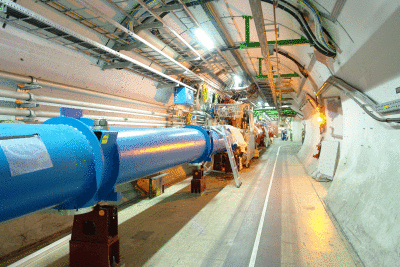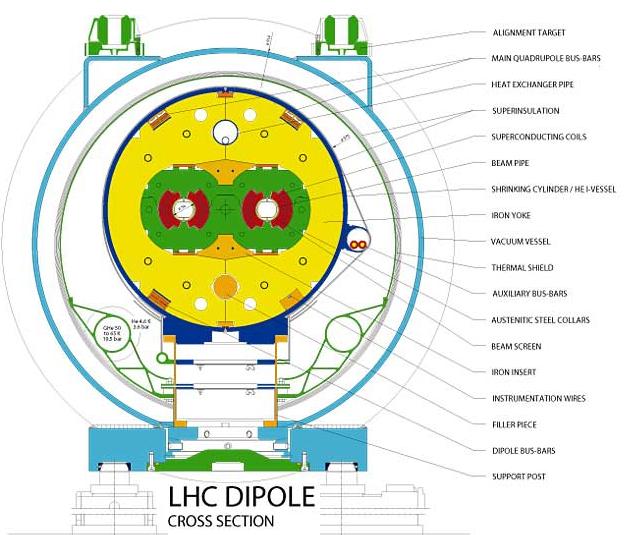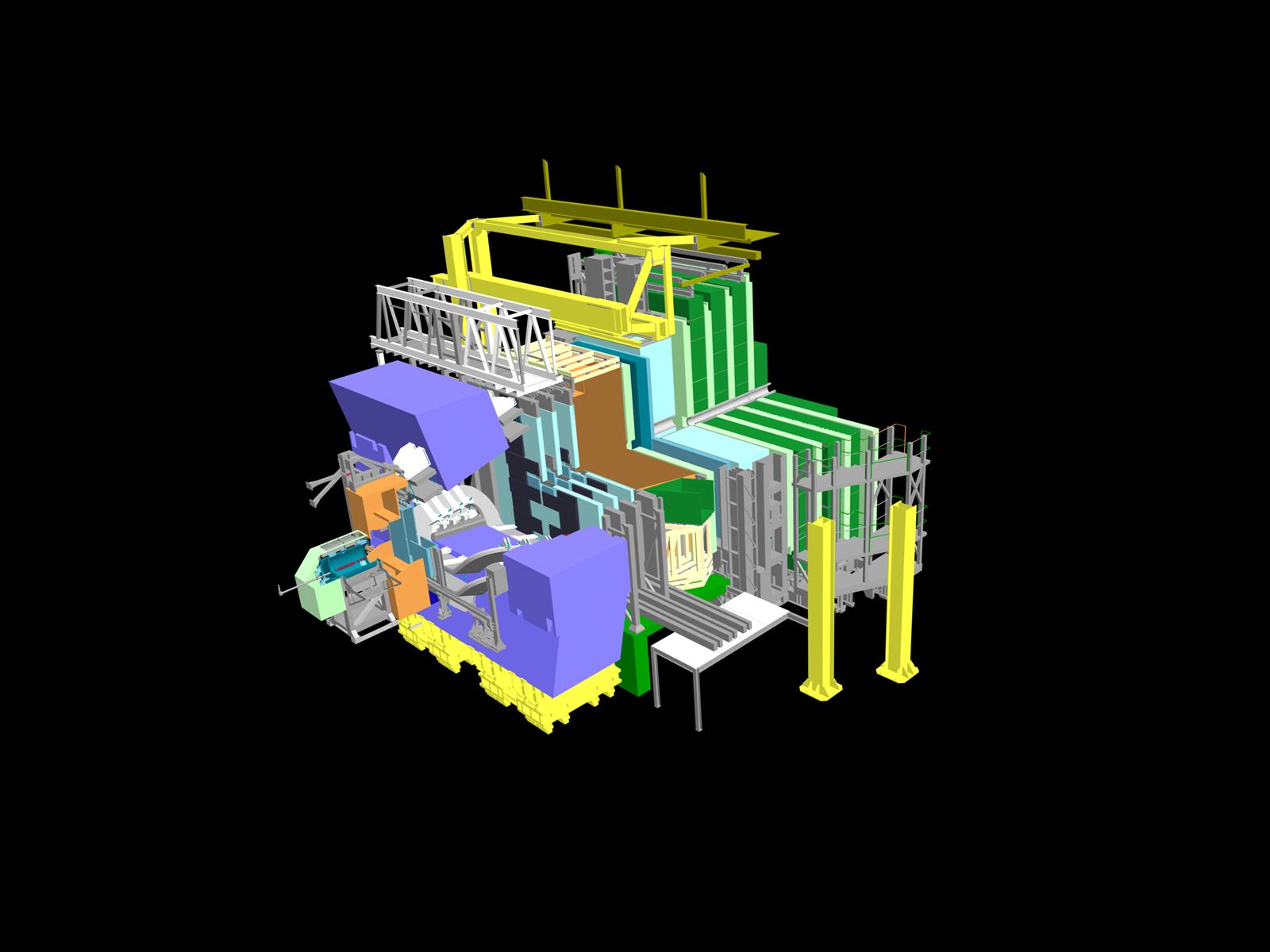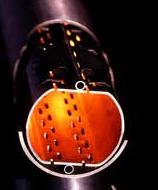Taking a closer look at LHC
In an accelerator, particles circulate in a vacuum, and the LHC has the particularity of having not one, but three vacuum systems:
- insulation vacuum for cryomagnets
- insulation vacuum for the helium distribution line
- beam vacuum
ULTRAHIGH VACUUM: the beam vacuum pressure is about 10–7 Pa in the beam pipe at cryogenic temperature (~5 K) because we want to avoid collisions with gas molecules, and lower than 10–9 Pa close to Interaction Points, because in this part is where collisions take place.
In the cryomagnets and the helium distribution line, the vacuum serves a different purpose. Here, it acts as a thermal insulator, to reduce the amount of heat that seeps from the surrounding room-temperature environment into the cryogenic parts which are kept at at 1.9 K (-271.3°C).
The pressure in the beam pipes of the LHC will be about one hundred times lower than on the Moon. It is the emptiest space in the Solar System.
Though these technologies were developed for fundamental research, they have found everyday uses: ultra-high vacuum technology made possible a major improvement in the performance of solar thermal collector panels, for example.
The volume to be pumped in the LHC beam pipes (length 27 km ,, r ~ 3 cm) is:
2 × (27·103 × π × 0.032) ~ 150 m3
But the largest volume to be pumped in the LHC is the insulation vacuum for the cryomagnets (~ 15000 m3 — like pumping down the central nave of a cathedral!)

| The beam vacuum system comprises the inner ‘cold bore’ walls of the magnets which provide a nearly perfect cryopump. In view of reducing the cryogenic power consumption, both the heat load from synchrotron radiation emitted by the proton beams and the resistive power dissipation by the beam image currents have to be absorbed on a ‘beam screen’, which operates between 5 and 20 K and is inserted inside the cold bore. The design operating pressure must provide a beam lifetime of several days and this requirement comes from the power deposition in the superconducting magnet coils due to protons scattered on the residual gas which could lead to a magnet quench and interrupt the machine operation. |
Slits in the screens allow residual gas molecules to be pumped out and frozen to the walls of the ultra-cold beam pipe. |
Cryopumping of gas on the cold surfaces provides the necessary low gas densities but it must be ensured that the vapour pressure of cryosorbed molecules, of which H2 and He are the most critical species, remains within acceptable limits.

The vacuum system for the LHC will be at cryogenic temperatures (between 1.9 and 20 K) and will be exposed to synchrotron radiation emitted by the protons. A stringent limitation on the vacuum is given by the energy deposition in the superconducting coils of the magnets due to nuclear scattering of the protons on residual gas molecules because this may provoke a quench. This effect imposes an upper limit to a local region of increased gas density (e.g. a leak), while considerations of beam lifetime (100 h) will determine more stringent requirements on the average gas density. The proton beam creates ions from the residual gas which may strike the vacuum chamber with sufficient energy to lead to a pressure 'run-away' when the net ion induced desorption yield exceeds a stable limit. Synchrotron radiation induced gas desorption, well known from electron rings, also affects the dynamic vacuum in the cold LHC by the gradual accumulation of easily re-desorbable, condensed gas and by the steeply rising H2 vapour pressure as the coverage exceeds a monolayer. These dynamic pressure effects will be limited to an acceptable level by installing a perforated 'beam screen', as indicated before, which shields the cryopumped gas molecules at 1.9 K from synchrotron radiation and which also absorbs the synchrotron radiation power at a higher and, therefore, thermodynamically more efficient temperature.
More information in Oswald Gröbner, for the LHC Vacuum Group , VACUUM SYSTEM CHAPTER 12 in LHC Design Report Volume I, or in The LS2 vacuum challenge
|
AUTHORS Xabier Cid Vidal, PhD in experimental Particle Physics for Santiago University (USC). Research Fellow in experimental Particle Physics at CERN from January 2013 to Decembre 2015. He was until 2022 linked to the Department of Particle Physics of the USC as a "Juan de La Cierva", "Ramon y Cajal" fellow (Spanish Postdoctoral Senior Grants), and Associate Professor. Since 2023 is Senior Lecturer in that Department.(ORCID). Ramon Cid Manzano, until his retirement in 2020 was secondary school Physics Teacher at IES de SAR (Santiago - Spain), and part-time Lecturer (Profesor Asociado) in Faculty of Education at the University of Santiago (Spain). He has a Degree in Physics and a Degree in Chemistry, and he is PhD for Santiago University (USC) (ORCID). |
CERN CERN Experimental Physics Department CERN and the Environment |
LHC |
IMPORTANT NOTICE
For the bibliography used when writing this Section please go to the References Section
© Xabier Cid Vidal & Ramon Cid - rcid@lhc-closer.es | SANTIAGO (SPAIN) |




